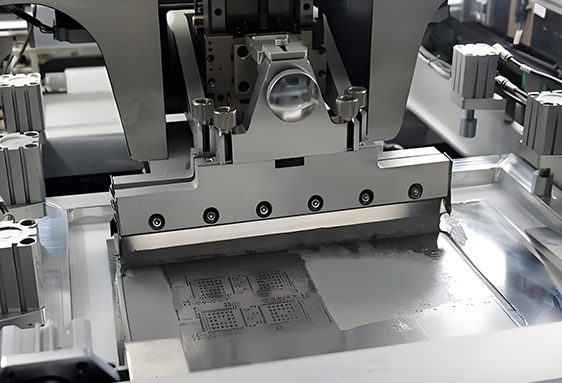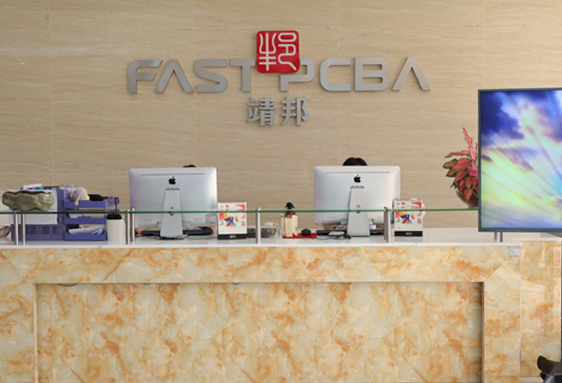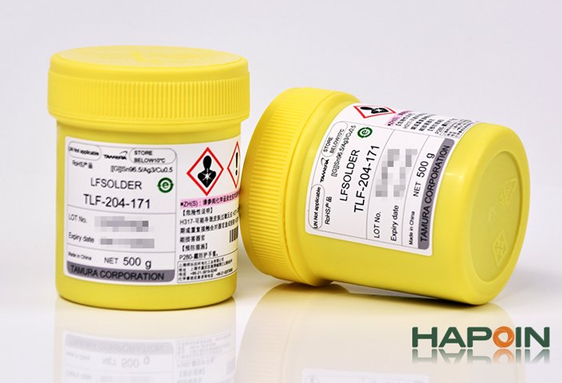In-depth Analysis Report on the PCBA Market in the Automotive Industry
pcba15@fastpcba.cn
1. Market Size and Growth Trends
1.1 Current Market Size
In recent years, the demand for PCBA (Printed Circuit Board Assembly) in the global automotive industry has been continuously rising. According to data from market research institutions, the global automotive PCBA market size was approximately 40 billion US dollars in 2020 and grew to 55 billion US dollars in 2024. The Asia-Pacific region is the largest market, accounting for approximately 45% of the market share, mainly due to the strong demand from major automotive manufacturing countries such as China, Japan, and South Korea.
Year Global Automotive PCBA Market Size (billion US dollars) Asia-Pacific Region Market Size (billion US dollars) Asia-Pacific Region Market Share
1.2 Growth Trend Forecast
It is expected that in the next few years, with the accelerated development of automotive intelligence, electrification, and connectivity, the global automotive PCBA market will maintain a stable growth trend. It is estimated that by 2030, the market size is expected to exceed 80 billion US dollars, with a compound annual growth rate of approximately 6%. The rise of new energy vehicles will become an important driving force for the growth of the automotive PCBA market. According to relevant data forecasts, the value of PCBA in new energy vehicles is approximately 30% higher than that in traditional fuel vehicles. This is mainly because the battery management system, motor control system, etc. of new energy vehicles have more complex and high-end requirements for PCBA.
2. Application Field Analysis
2.1 Powertrain System
In traditional fuel vehicles, PCBA is widely used in key components such as the engine control unit (ECU) and transmission control unit (TCU). Taking the engine control unit as an example, its PCBA is responsible for precisely controlling key parameters such as fuel injection and ignition timing, which plays a decisive role in the performance and fuel economy of the engine. In new energy vehicles, PCBA is an even more critical part of the core components. For example, the PCBA of the battery management system (BMS) needs to monitor the voltage, current, temperature, and other parameters of the battery in real-time to ensure the safe and efficient operation of the battery. According to statistics, the cost of PCBA in the battery management system of a new energy vehicle accounts for approximately 20% of the total cost of the system.
2.2 Safety System
The automotive safety system is also increasingly dependent on PCBA. Anti-lock braking systems (ABS), electronic stability control systems (ESC), airbag control systems, etc. all rely on the support of PCBA. For example, the PCBA of the airbag control system needs to detect the vehicle collision signal within an extremely short time (usually within a few milliseconds) and quickly trigger the inflation of the airbag to protect the safety of passengers. At present, the rapid development of advanced driver assistance systems (ADAS) has further promoted the application of PCBA in the safety field. The signal processing and control of cameras, radars, ultrasonic sensors, and other equipment in the ADAS system rely on high-performance PCBA.
2.3 Infotainment System
With the continuous improvement of consumers' requirements for automotive comfort and entertainment, the infotainment system has become an important part of the vehicle. PCBA undertakes various functions such as display control, audio processing, and navigation positioning in the infotainment system. For example, the driver board of the in-vehicle multimedia display screen and the power amplifier board of the audio system are specific applications of PCBA. According to market research, approximately 70% of consumers consider the function and experience of the infotainment system as an important factor when purchasing a car, which prompts automotive manufacturers to continuously upgrade and optimize the PCBA technology in the infotainment system.
3. Competitive Landscape Analysis
3.1 Overview of Major Companies
Currently, the automotive PCBA market is highly competitive, with many participants, including globally renowned electronic manufacturing services (EMS) companies and automotive parts suppliers. Among them, large EMS companies such as Foxconn and Flextronics have a certain market share 凭借 their large-scale production capacity and rich manufacturing experience. At the same time, automotive parts suppliers such as Bosch and Continental have strong competitiveness in the automotive PCBA field due to their deep accumulation in the automotive industry and in-depth understanding of automotive electronic systems.
3.2 Market Share of Companies
According to a report by a market research institution, the top five companies in the global automotive PCBA market share in 2024 are: Bosch (with a market share of approximately 18%), Continental (with a market share of approximately 15%), Foxconn (with a market share of approximately 12%), Flextronics (with a market share of approximately 10%), and Denso (with a market share of approximately 8%). These companies have their own advantages in technology research and development, production scale, and customer resources, and jointly dominate the development of the global automotive PCBA market.
4. Driving Factors and Challenges
4.1 Driving Factors
Automotive Intelligence Trend: With the continuous development of autonomous driving technology, the demand for sensors, controllers, and other electronic devices in automobiles has exploded, which has directly driven the market demand for automotive PCBA. For example, L3 and above level autonomous driving vehicles need to be equipped with more cameras, radars, and ultrasonic sensors, which all require high-performance PCBA to support signal processing and data transmission.
Development of New Energy Vehicles: The rapid popularization of new energy vehicles has significantly increased the demand for PCBA in key components such as battery management systems and motor control systems. At the same time, new energy vehicles have a higher degree of electronification, and the requirements for in-vehicle infotainment systems and intelligent driving assistance systems are also more stringent, further promoting the development of the automotive PCBA market.
Upgraded Consumer Demand: Consumers' increasing requirements for automotive comfort, safety, and entertainment have prompted automotive manufacturers to continuously upgrade the electronic configuration of automobiles. For example, larger central control display screens, higher-end audio systems, and smarter driving assistance functions all rely on the support of PCBA.
4.2 Challenges
Pressure of Technological Innovation: The automotive industry has extremely high requirements for the performance, reliability, and safety of PCBA. With the continuous progress of automotive technology, PCBA manufacturers need to continuously invest in research and development resources to meet the needs of automotive manufacturers for PCBA with higher integration, smaller size, lower power consumption, and higher reliability. For example, in the field of autonomous driving, PCBA needs to have higher computing power and faster data processing speed to cope with complex road conditions and driving scenarios.
Supply Chain Risks: The production of automotive PCBA involves many raw material and parts suppliers, and the supply chain is complex. Uncertainties in the global trade situation, fluctuations in raw material prices, natural disasters, and other factors may affect the supply chain, resulting in shortages or price increases in raw material supply and increasing the production costs and supply risks of PCBA manufacturers.
Strict Quality and Safety Standards: The automotive industry has extremely strict quality and safety standards. As a key component of automotive electronic systems, PCBA must comply with relevant international standards and regulatory requirements. Such as the ISO/TS 16949 quality management system standard, the automotive functional safety standard ISO 26262, etc. PCBA manufacturers need to establish a complete quality management system and strengthen quality control during the production process to ensure the quality and safety of products.
5. Future Development Trends
5.1 Technological Innovation Directions
Higher Integration: In order to meet the needs of automotive electronic systems for smaller size and higher performance, PCBA will develop towards higher integration. For example, integrating multiple chips and functional modules into a tiny package to reduce the area and weight of the circuit board and improve the reliability and stability of the system.
Advanced Packaging Technologies: With the continuous progress of chip technology, advanced packaging technologies such as flip chip (Flip Chip), chip-scale packaging (CSP), and system-in-package (SiP) will be more widely used in automotive PCBA. These packaging technologies can improve the electrical performance and heat dissipation performance of chips while reducing costs.
Intelligence and Networking: The trends of automotive intelligence and networking will prompt PCBA to have stronger intelligent processing capabilities and network communication capabilities. For example, PCBA that supports 5G communication will provide higher-speed and more stable network connections for automobiles, enabling real-time communication between vehicles (V2V) and between vehicles and infrastructure (V2I), promoting the development of autonomous driving and intelligent transportation systems.
5.2 Market Development Forecast
Continuous Expansion of Market Size: Under the trends of automotive intelligence, electrification, and networking, the global automotive PCBA market size will continue to maintain a growth trend. It is estimated that by 2030, the market size will reach more than 80 billion US dollars, with a compound annual growth rate of approximately 6%.
Huge Potential in Emerging Markets: With the transfer of the global automotive industry and the development of the economies of emerging market countries, the automotive markets in the Asia-Pacific, South America, and Eastern Europe regions will experience rapid growth. The demand for PCBA from automotive manufacturers in these regions will also increase, becoming an important growth point for the global automotive PCBA market.
Accelerated Industrial Convergence: The automotive PCBA market will continue to deepen its integration with industries such as semiconductors, electronic materials, and communications. For example, automotive manufacturers will strengthen cooperation with semiconductor companies to jointly develop high-performance chips and PCBA solutions suitable for automotive electronic systems, promoting the coordinated development of the entire industrial chain.
6. Conclusion
The rapid development of the automotive industry has brought broad development space for the PCBA market. With the continuous strengthening of the trends of automotive intelligence, electrification, and networking, the market demand for automotive PCBA will continue to grow, and the market size is expected to further expand. However, PCBA manufacturers also face challenges in technological innovation, supply chain management, quality and safety, and other aspects. In order to gain an advantage in the fierce market competition, companies need to continuously increase research and development investment, enhance technological innovation capabilities, optimize supply chain management, and strengthen quality control to meet the high-performance, high-reliability, and high-safety requirements of the automotive industry for PCBA. At the same time, paying attention to market dynamics and technological development trends, actively expanding emerging markets, and strengthening industrial cooperation and integration will help companies obtain greater development opportunities in the future automotive PCBA market.















